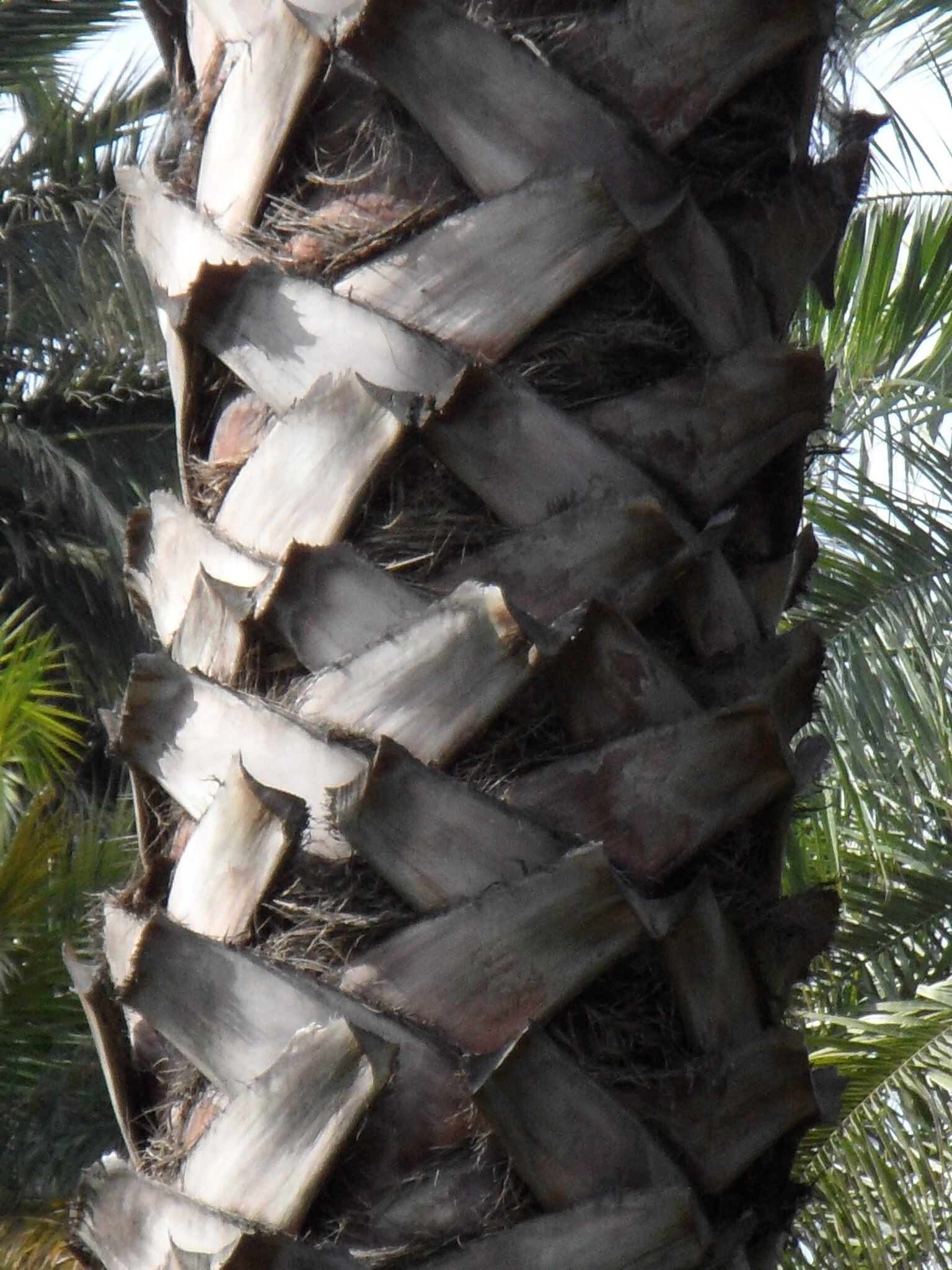
Trunk to 15 m tall, 0.8 m wide, grey, ringed, generally thick and barrel-like with vertical fissures, the base hardly expanded. Leaves grey-green, erect to drooping in a somewhat elongated crown, usually with a skirt of dead hanging leaves. Junction of blade and stalk (hastula) generally 8-15 cm long without a woolly patch below. Leaf stalk with or without a few spines. Leaf blade quite deeply divided. Leaflets drooping and with white cottony threads on their margins. Panicles hanging well beyond the crown. Flowers white. Fruit about 1 cm across, round, black.
North America
Occurs in south-eastern California, western Arizona and Baja California growing around springs in semi-arid regions.
Widely planted in larger gardens and often used to line avenues and driveways, especially in inland districts. Once established, plants are very tolerant of cold and dryness.
Large palm generally with a massive woody trunk; large crown of greyish green leaves with cottony threads on the leaflets; long flower panicles hanging well beyond the leaves.
NSW: Albury (Albury Botanic Gardens); Sydney (Royal Botanic Garden Sydney); Vic: Bendigo (Conservatory Gardens); Clifton Hill (Darling Gardens); Footscray (Footscray Park); Merbein; St Kilda (cnr Melby Ave & Hotham St, St Kilda Botanical Gardens); Melbourne (Royal Botanic Gardens Victoria (Melbourne Gardens)); Mildura (Education Centre; Arts Centre; Etiwanda Avenue; 7th Street; Deakin Avenue); St Arnaud (Queen Mary Gardens);Yarraville (Yarraville Gardens).
Source: (2005). Arecaceae. In: . Horticultural Flora of South-eastern Australia. Volume 5. Flowering plants. Monocotyledons. The identification of garden and cultivated plants. University of New South Wales Press.
